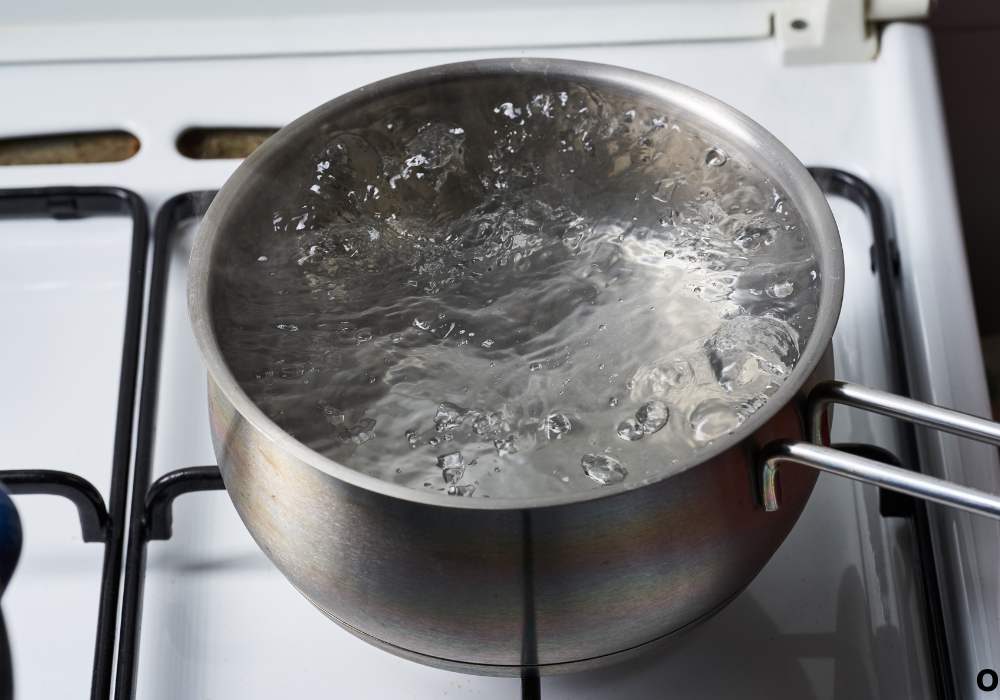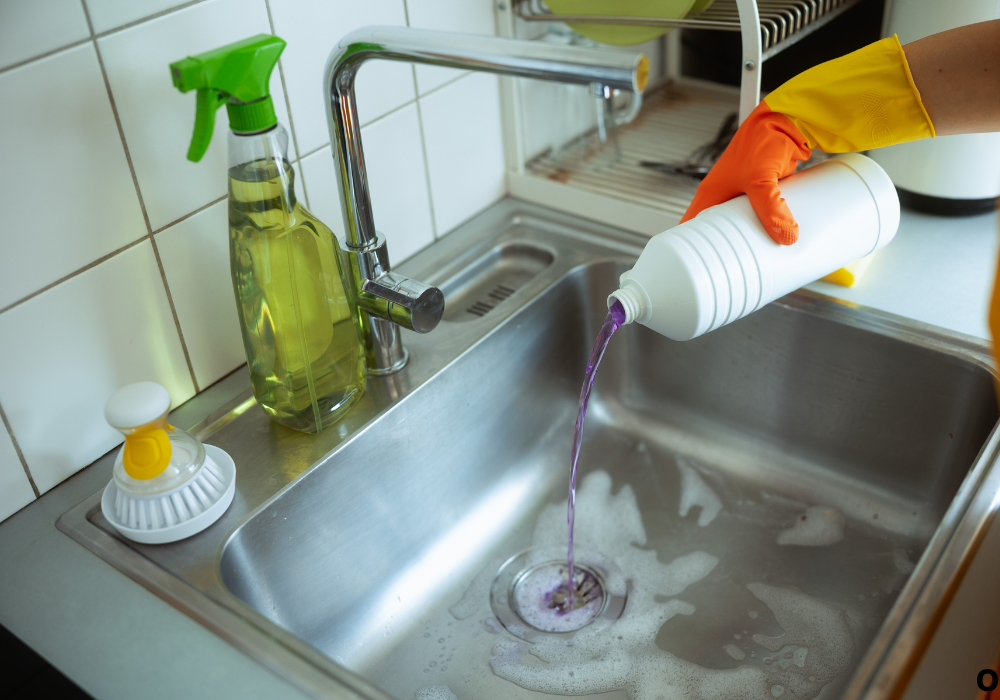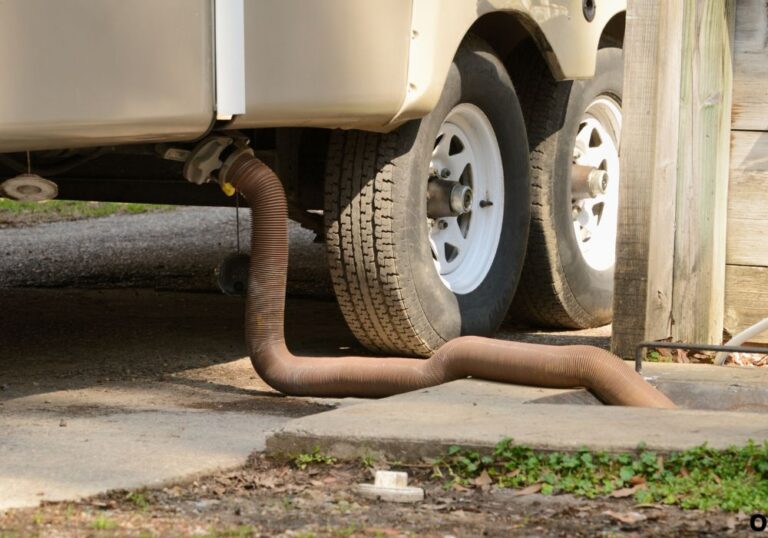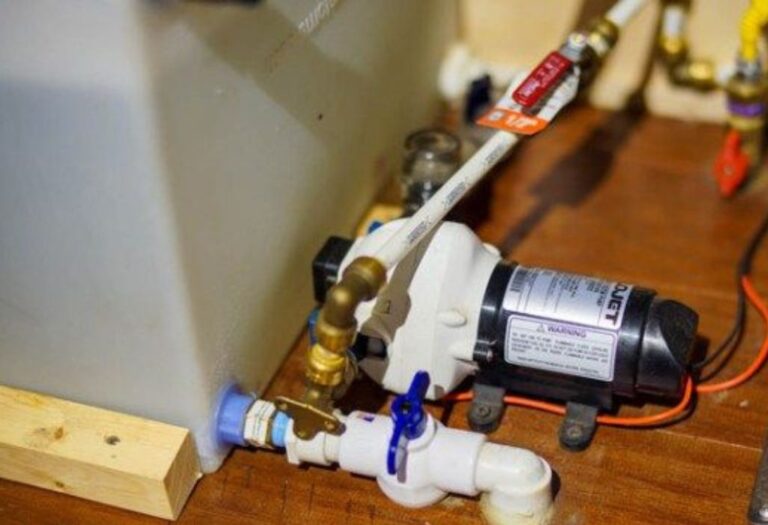Can You Pour Boiling Water Down an RV Sink?
Cooking a pot of pasta on the road can feel like a little slice of home, but what happens when that steaming water needs to go—straight down the RV sink? Many RV owners wonder: can you pour boiling water down an RV sink safely. One wrong move could lead to cracked sinks, sagging pipes or costly repairs—all things that ruin a weekend adventure. According to plumbing studies, materials like PVC used in many drain systems soften at temperatures above approximately 140 °F (60 °C). Southern Living+1 That means the 212 °F (100 °C) of boiling water may exceed the safe limit for some RV plumbing components. Imagine you’re at your favourite campground, pot of boiling water in hand, ready to dump it into the sink—only to hear a subtle crack or see a stress line in the sink basin. For RV sinks made of acrylic or composite materials, manufacturers warn that rapid thermal shock can cause expansion, micro-fractures and eventual leaks. jaycoowners.com On the flip side, a quick pour of pasta water into a stainless or properly rated drain may pose little risk—but that very “may” leaves too much uncertainty for serious RV maintenance. What follows in this article is a careful exploration of the question can you pour boiling water down an RV sink, including how RV plumbing differs from home plumbing, what materials are used, safe practices and alternate methods when you’re on the go. By the end you’ll understand how to protect your plumbing investment, so the only thing you worry about on your next trip is which scenic route to take—not a drain repair waiting for you back home.
Understanding Your RV Sink and Plumbing System

Before deciding whether you can pour boiling water down an RV sink, it’s essential to understand how your RV’s plumbing differs from a regular home. Most RV systems use lightweight plastic components designed for portability and efficiency—not for extreme heat exposure. In typical RVs both fresh and grey-water lines are made from PEX tubing or PVC piping, while the sink basin is often acrylic, composite, or plastic. These materials handle warm water well but can deform or weaken under direct pour of boiling temperatures above 190 °F (88 °C). The smaller pipe diameters and shorter runs in RVs also trap heat more quickly, increasing the risk of warping or seal failure.
Why are RV pipes more heat-sensitive than home plumbing?
Because RV plumbing uses flexible plastics instead of metal or copper, which expand under high heat causing fittings and joints to loosen over time.
What temperature can most RV drain pipes handle safely?
Most PVC and PEX lines are rated for water up to about 140 °F (60 °C), making boiling water nearly 70 °F hotter than their safety limit.
Does the sink material matter when pouring hot water?
Yes. Metal sinks dissipate heat faster, while plastic or acrylic basins retain heat longer, creating stress points that may crack with sudden temperature changes.
Can insulation or design protect against boiling water damage?
Some high-end RVs include insulated plumbing or metal fittings, but even then consistent boiling-water exposure can shorten the lifespan of gaskets and seals.
Is it ever safe to pour boiling water down an RV sink occasionally?
Occasional quick pours, diluted with cold water immediately after, may not cause damage—but repeated exposure or direct contact without cooling can weaken your entire drain system.
Risks of Pouring Boiling Water Down an RV Sink
Pouring boiling water down your RV sink may seem harmless, but it carries several risks—from material damage to plumbing failure and even safety hazards. When hot water enters a colder sink basin or plastic drain line, thermal shock can occur — the sudden temperature change causes expansion and contraction, which stresses joints and materials. According to professional sources, pouring boiling water down drains made from PVC can soften or even melt parts of the piping system. Homes and Gardens+1 Even if the immediate damage is not visible, over time this repeated stress may cause micro-cracks, sagging pipes, or leaks in your grey water system.
What happens when boiling water contacts plastic fittings in an RV?
The heat may soften the plastic, causing the fitting to deform or lose its bond with glued joints, leading to leaks.
Can the sink basin itself crack from boiling water?
Yes, especially if it is acrylic or composite; rapid expansion from heat may cause hairline fractures that expand with stress. jaycoowners.com
Does it affect the grey water tank or drain line slope?
Potentially. If a drain line softens and sags, the slope changes and waste may accumulate, increasing the risk of backups.
Are there safety risks to you when dumping boiling water?
Yes. Splashes of boiling water or steam can cause scald injuries—especially in the tighter spaces of an RV where movement is limited.
Does pouring boiling water clear clogs safely in an RV sink?
It can sometimes temporarily clear grease and starch build-up, but the heat may do more harm than good long term—so it’s not recommended as a routine method.
Safe Alternatives and Best Practices

Since the question can you pour boiling water down an RV sink leads to “it depends”, it’s smarter to adopt safe alternatives and best practices to protect your system. First, let hot water cool a little before disposal or mix it with cold water while pouring to bring the temperature closer to safe limits. Run the cold tap as you pour to dilute and reduce thermal shock. Use a strainer or colander to remove large chunks of food, starches or grease before they go down the drain—this prevents build-up and frees you from needing extreme-temperature methods.
What’s the best way to dispose of pasta or boiling water on the road?
Use a colander to strain pasta, pour the water into a heat-resistant container, let it settle or mix with cold, then dispose when safe.
Can you still use hot water for cleaning RV drains?
Yes, but avoid full boiling; moderate hot water (~120-140 °F) that your system can handle is far safer for regular flushes.
What about using drain-safe chemicals or tools?
Mechanical tools like a hand auger or drain snake are preferable; chemical drain cleaners should be used cautiously and only when absolutely needed.
When should you inspect or upgrade your RV plumbing for heat tolerance?
If you cook often in your RV, check if the sink, fittings, and pipes are rated for higher temperature (e.g., metal sinks, CPVC or metal drain lines) and upgrade where feasible.
Is regular maintenance important for an RV drain system?
Absolutely. Regular inspection of seals, traps, and piping, plus rinsing with warm (not boiling) water and avoiding grease are key to long-term reliability.
Materials and Temperature Ratings to Know

When asking can you pour boiling water down an RV sink, one major part of the answer depends on what materials are used in your RV’s plumbing system and their temperature ratings. Many RV sinks are made from acrylic, composite or lightweight metals and the drain connections often use PVC, PEX or ABS plastics, each with different heat tolerances. For example, some PVC pipes are rated only up to around 140 °F (60 °C) for safe continuous use. Southern Living+1 ABS and CPVC may handle higher temperatures, but even they are not guaranteed for repeated boiling-water exposure. Furthermore, glue bonds and flexible drain hoses degrade quicker when exposed to extreme heat cycles, so you should know the specific ratings of your RV components.
How do you identify the material of your RV sink drain pipe?
Look for markings on the pipe (e.g., “PVC”, “CPVC”, “ABS”, “PEX”), or consult your RV documentation/owner’s manual for plumbing specifications.
What is the typical safe operating temperature for PEX/PEX-AL/PEX plumbing?
Many PEX systems are rated for continuous use around 180 °F (82 °C) maximum, meaning they are still below boiling thresholds.
Does the sink material (acrylic vs. stainless steel) make a big difference?
Yes. Stainless steel tolerates boiling water with minimal stress; acrylic and composites are more vulnerable to thermal shock and may crack or deform.
Are flexible drain hoses common in RVs heat-rated?
They are common, but many are not designed for repeated boiling-water contact; they may soften and sag over time.
Should you upgrade to metal fittings or higher-temp rated piping?
If you cook frequently and pour hot liquids often, upgrading to CPVC, metal drain lines, or a stainless-steel sink basin is a wise investment.
Practical Steps for Safe Disposal On the Road
To manage hot-water disposal safely when camping or on the road, it helps to follow a checklist of practical steps. Always allow the boiled water to sit for a minute or mix with cold water in a pot before disposal. Run cold water from the faucet for 10–15 seconds before and during pouring to temper the hot water as it flows. Use a strain-container to catch solids, grease or starch that might otherwise travel into your grey tank. Avoid dumping large quantities of boiling water at once—split pours into smaller amounts to give time for cooling and spreading the thermal load. After use, flush your drain with warm (not boiling) water and then cold water to clear residual heat and debris.
How much time should you wait before pouring boiling water?
Waiting 1–2 minutes after removing from heat or mixing with cold water helps reduce risk significantly.
Is it okay to pour in small amounts instead of all at once?
Yes. Smaller amounts lower the peak temperature and reduce thermal shock to plumbing.
Should you run cold water while pouring hot water down the RV sink?
Yes. Running cold water helps dilute the temperature and prevent damage to plastic fittings and drain hoses.
What do you do after pouring hot water to finish the process?
Flush the sink with warm then cold water to help normalize temperature and clean the drain line.
Are there items you should never pour down the sink with hot water?
Avoid fats, oils, large starchy water loads (like pasta water) without pre-filtering or cooling—they may cause grey-tank build-up or blockages.
Conclusion
So, can you pour boiling water down an RV sink? The short answer is: technically you can, but it is not recommended without caution. RV plumbing systems are built with materials and design constraints that often differ from residential homes, and repeated exposure to boiling water increases risk of damage, leaks or failure. By understanding your system’s materials, using tempered or cooled water, running cold water during pours, and maintaining good drain habits, you’ll minimize risk and keep your grey-water system functioning well. Protecting your plumbing means fewer surprises, less downtime, and more freedom on your next road adventure. Call-to-Action: Before your next trip, inspect your RV’s sink and drain fittings, and adopt these safe hot-water disposal practices—so you spend your time admiring the view, not worrying about the pipes.
I’m David R. Coleman, the founder, lead writer, and lifelong tool enthusiast behind GarageToolPro.com. With years of experience in automotive repair, woodworking, and home DIY projects, I created this platform to share practical tips, detailed tool reviews, and step-by-step guides that help mechanics, hobbyists, and homeowners get the job done right the first time.





